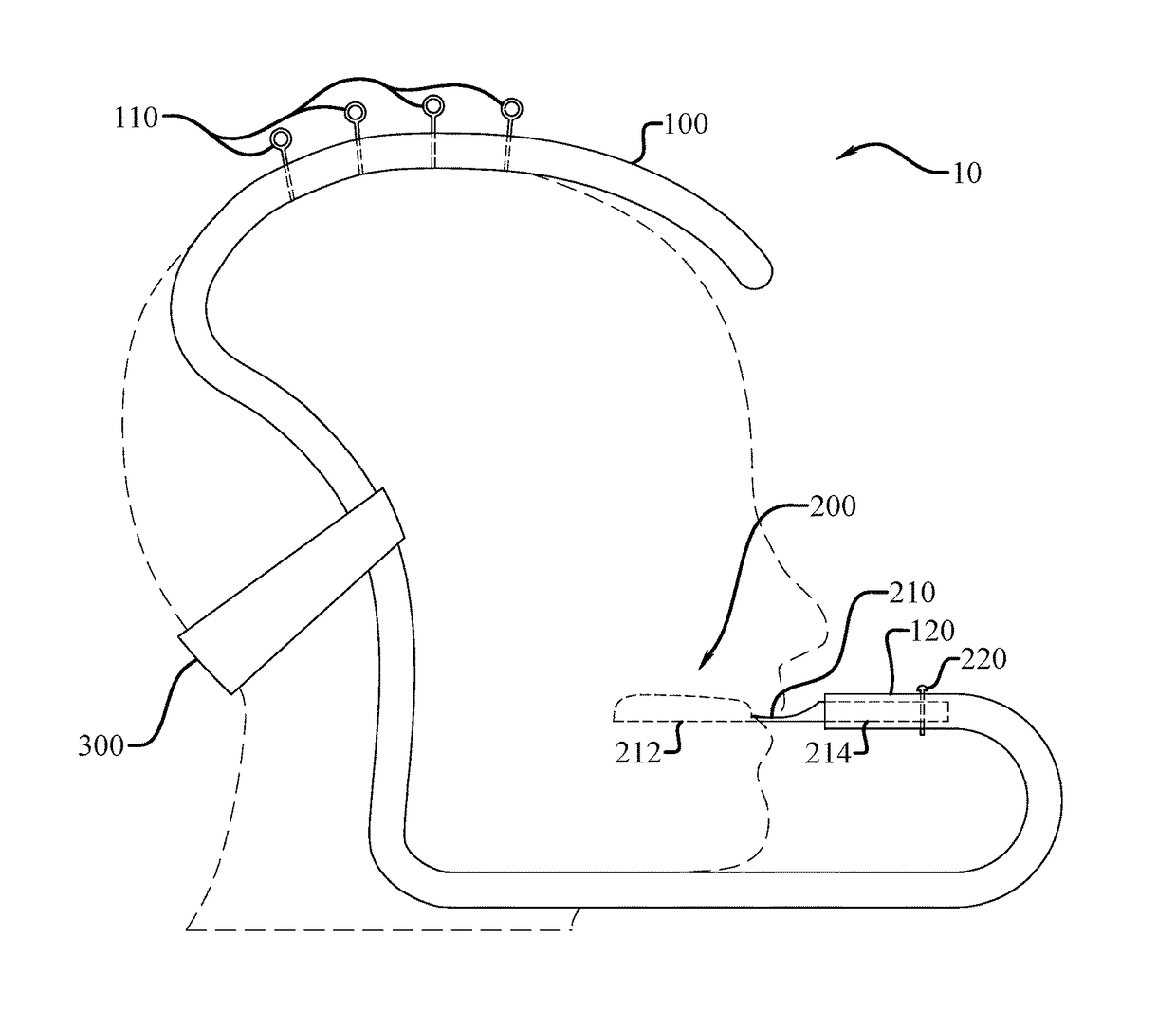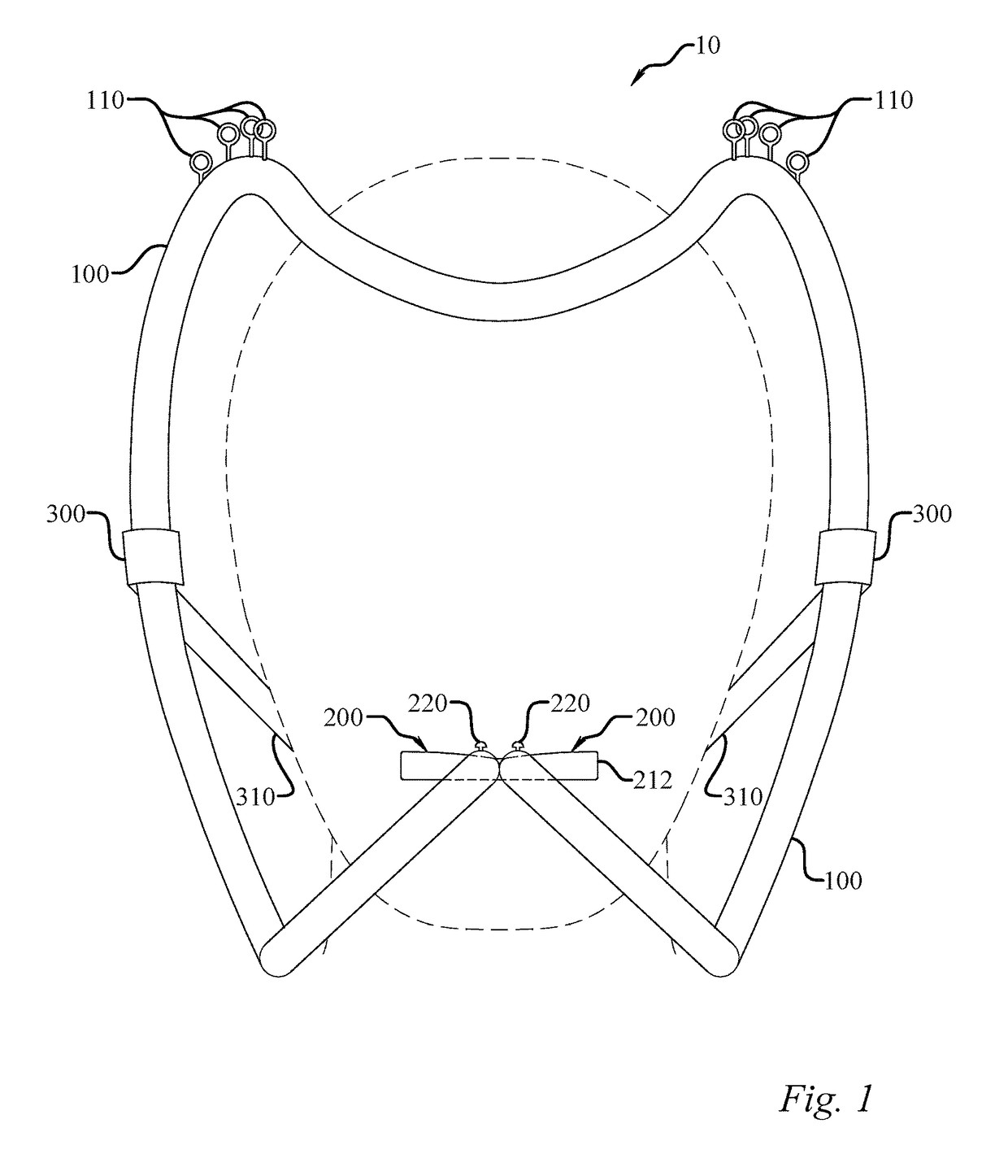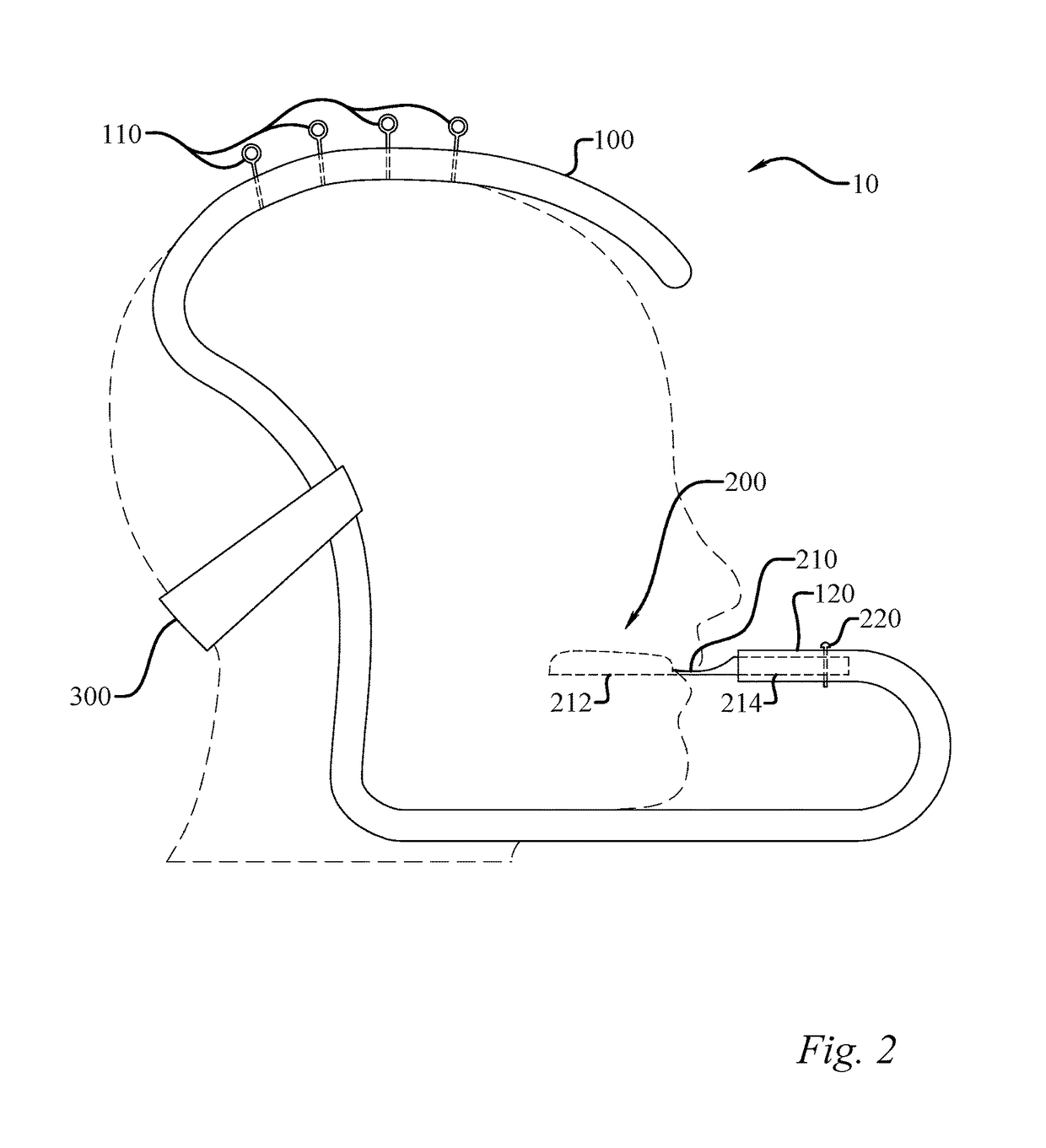Cervical traction device and method of using same
a cervical traction and traction device technology, applied in the field of cervical traction, can solve the problems of inability to achieve a proper effect on the spine, decreased patient compliance with the treatment program, and inability to treat patients, so as to achieve the effect of reducing the storage space required and being more efficient in travel and transportation
- Summary
- Abstract
- Description
- Claims
- Application Information
AI Technical Summary
Benefits of technology
Problems solved by technology
Method used
Image
Examples
Embodiment Construction
[0021]As seen in FIGS. 1-5, certain embodiments of a cervical traction device may be seen. In one such embodiment, seen well in FIGS. 1-3, a cervical traction device (10) may include a frame (100) and two non-traumatic and releasable skull attachments (200, 300). A first skull attachment (200) may be attached to the frame (100) where it would be and releasably attachable to a skull at an anterior portion of a head on an inferior aspect of a maxilla of a user. Thus upward force would be exerted on the maxilla, and not the mandible as is common in the prior art. There may be a second skull attachment (300) attached to the frame (100) where it would be releasably attachable to the skull at a posterior portion of the head on an inferior aspect of an occiput of the user. Thus, the total upwards traction force could be distributed between the lower back of the head and the maxilla.
[0022]The skull attachments (200, 300) may be fixed to the frame, or they may be releasably attached, and may...
PUM
 Login to View More
Login to View More Abstract
Description
Claims
Application Information
 Login to View More
Login to View More - R&D
- Intellectual Property
- Life Sciences
- Materials
- Tech Scout
- Unparalleled Data Quality
- Higher Quality Content
- 60% Fewer Hallucinations
Browse by: Latest US Patents, China's latest patents, Technical Efficacy Thesaurus, Application Domain, Technology Topic, Popular Technical Reports.
© 2025 PatSnap. All rights reserved.Legal|Privacy policy|Modern Slavery Act Transparency Statement|Sitemap|About US| Contact US: help@patsnap.com



